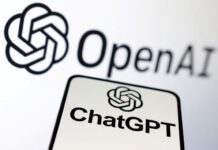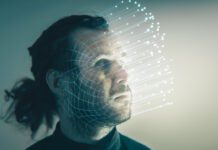 Reports this weekend claimed that YouTube is on the verge of buying games streaming service Twitch for $1bn – a deal not a million miles away from the $1.65bn that Google paid for YouTube back in 2006.
Reports this weekend claimed that YouTube is on the verge of buying games streaming service Twitch for $1bn – a deal not a million miles away from the $1.65bn that Google paid for YouTube back in 2006.
Twitch is well known to tens of millions of gamers, but still somewhat under the radar for everyone else. So what is the company, how popular is it, and why might YouTube want to buy it? Here’s a primer.
What is Twitch?
It’s essentially the YouTube for live gaming: people broadcast themselves playing and/or talking about games while other people watch them (either live or via archived footage) while chatting about it.
Is it popular?
Very. Last year, Twitch more than doubled its monthly audience from 20m people at the end of 2012 to 45m at the end of 2013. Those viewers were watching 106 minutes a day on average, with 6m videos broadcast on the site every month by 900,000 unique broadcasters.
In February this year, a study by internet infrastructure company Deep Field claimed that in primetime hours in the US, Twitch was the fourth largest source of network traffic, behind only Netflix, Google and Apple.
Meanwhile, last October’s League of Legends Season 3 World Championship event attracted 32m viewers in a single day, with 8.5m watching simultaneously at its peak.
Where did Twitch come from?
Twitch was a spin-off from Justin.tv, one of the first big livestreaming-video sites online. It launched in June 2011 billed as “the largest competitive video gaming broadcast network in the world”, with an emphasis on e-sports (competitive gaming). Since then, the company has raised $35m in funding from various venture capital firms in two rounds.
Who’s on it and what are they watching?
In its report at the end of 2013, Twitch said that 76% of its users are aged between 18 and 49; that 68% are watching less TV in order to focus on “game entertainment”; and that 58% spend more than 20 hours a week on Twitch.
Around 99% of users watch live streams of games, while 38% watch video highlights, 61% chat with other Twitch users and 25% broadcast their own gameplay.
Broadcasters include games firms (Mojang, 2k and League of Legends creator Riotgames), media sites (Destructoid, Machinima and TouchArcade) and essentially lots of people who are really good at games.
“When video game historians look back on gaming a decade from now, 2013 will be the year they cite as the tipping point of streaming,” its vice president of marketing Matthew DiPietro told Forbes earlier this year.
“Every major event, publisher, developer, and media outlet in the gaming industry had a presence on Twitch, and streaming became an ever-present piece of the gaming experience. And it’s only going to get bigger.”
And then there’s Pokémon…
Pokémon?
Yep. Twitch’s biggest recent headlines were made by an inventive experiment on the network where up to 150,000 people at once crowdplayed vintage Game Boy game Pokémon Red on Twitch by typing in text commands, which were passed on to the emulator running the game – which tried to process them all.
It sounded (and often looked like) a recipe for digital chaos, but the players completed the game at the start of March, quickly moving on to try to crack Pokémon Crystal. It was fun rather than a serious glimpse at the future for Twitch as a gaming platform, but it helped a new wave of people learn about the site.
How does Twitch fit in with games consoles?
Twitch’s biggest recent moves have been integration into Sony’s PlayStation 4 and Microsoft’s Xbox One consoles, which both enable people to livestream video of their gaming exploits. Within a month of the PS4’s release in mid-November, 100,000 new broadcasters had signed up.
Twitch also has an app for Amazon’s recently-launched Fire TV set top box-cum-console. Where it’s not so big – yet – is in mobile gaming. There are Twitch apps for iOS and Android, but they’re purely for watching and chatting about videos, rather than broadcasting them from within games on those devices.
Why is YouTube interested?
YouTube and Twitch are both benefiting from the same trend: people going online to watch other people playing games – an artform that traditional television has usually struggled (in the west, at least) to make compelling viewing.
Gaming channels like PewDiePie, Stampy, The Diamond Minecart, Vanoss Gaming, Yogscast, Sky Does Minecraft and others are hugely popular on YouTube: PewDiePie is the most popular channel on the service with 26.4m subscribers, and nearly 300m video views in April alone.
Gaming is thus one of YouTube’s biggest genres alongside music. Buying Twitch would shore up that status, making YouTube the number one platform for e-sports as well as “Let’s Play” videos. Oh, and the huge and engaged audience to show ads to is obviously part of the appeal too.
The two companies also have similar approaches: for example, YouTube’s partner program for its creators is matched by Twitch’s Twitch Partner Program, which had 5,100 members at the end of 2013.
• Google reportedly acquiring live games video site Twitch for $1bn








